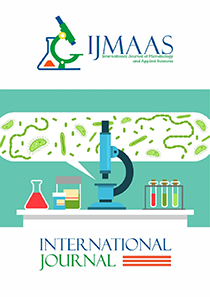Cultivation of Oyster Mushroom (Pleurotus ostreatus) Using Ricebran, Sawdust and their Mixed Bed as Substrates
Vol. 4, Issue 1, 2025
KEYWORDS
Oyster Mushroom, Substrate, Cultivation, Ricebran, Sawdust, Food Security.
Abstract
Oyster mushrooms (Pleurotus ostreatus) are nutritious and medicinal valuable food source, with growing demand globally due to their high protein content, dietary fiber, and potential health benefits. However, their cultivation is hindered by poor substrate selection, leading to reduced yields, lower quality, and decreased profitability. This study was aimed to determine the effect of different substrates on the performance of oyster mushrooms and identifying the optimal substrate for cultivation. Various agricultural residues were evaluated as potential substrates, including ricebran, sawdust, and other locally available materials. The physical and chemical properties of each substrate and their impact on optimum mycelial growth, fruiting body yield, and nutritional content of the mushrooms was assessed. The effects of different substrate types mixed bed, rice bran, and sawdust with composting intervals of 4, 8, and 12 weeks on the growth and yield of Pleurotus ostreatus was also investigated. The results showed that the mixed bed substrate supported the best growth and yield of P. ostreatus, with a significant increase in fruit weight (84.94g), average fruit weight (5.66g), and biological efficiency (42.47%) compared to rice bran and sawdust. Composting interval also had a significant effect on the growth and yield of P. ostreatus, with 12-week composting interval resulting in the highest fruit weight (84.94 g), biological efficiency (42.47%), and production efficiency (45.30%). The mixed bed substrate with a 12-week composting interval resulted in the highest number of fruits (15.0), longest length of stipe (4.33 cm), and largest width of pileus (6.07cm) indicating that a mixed bed substrate with a 12-week composting interval is the optimal combination for the cultivation of P. ostreatus. Identifying the best substrate will improve oyster mushroom production; enhance the economic and ecological values of this valuable crop, supporting rural development and income generation for small-scale farmers. This will also address malnutrition and health concerns associated with red meat consumption, and providing a sustainable solution for organic waste management. By addressing the challenges of substrate selection, this study has contributed to the sustainable development of oyster mushroom production, improving food security, and enhancing the livelihoods of rural communities.
Current: Vol. 4, Issue 1, 2025

Call for papers
The International Journal of Microbiology and Applied Sciences warmly welcome your valuable articles for publication.
